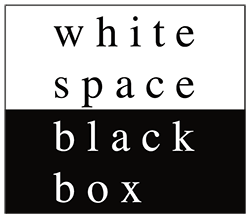
© HSG Hannes Thalmann – Gerhard Richter: «St. Gallen», 1989, oil on canvas, two tableaus, 250 × 680 cm
Art in Architecture at a Public University. Student’s and Staff’s Everyday Immersion
Corporate collections are quite common nowadays in Switzerland, but sixty years ago, they were not. The architect of the University of St. Gallen campus, Walter Förderer, in his endeavor to create a Gesamkunstwerk had the visionary idea to have the crème de la crème of the Paris art scene of the beginning of the Sixties come to St. Gallen to install their art in his impressive architecture. Since then, with every new building, the pioneering project keeps growing, and around 70 art works have been integrated in the architecture.
What makes the very high-caliber collection unique worldwide, is its low accessibility for students and staff of a business school and for visitors. Anyone can approach them very closely, thus, the timeless pieces of Giacometti, Calder, Miró, Tàpies, Braque, Arp of the Sixties are not exposed in a museal mode. This is due to the security culture in Switzerland. In comparison, Harvard, for example, has a good collection, too, but builds a museum on campus, and this is exactly what St. Gallen does not want to do; the art remains unpretentiously integrated in everyday life and working routine. Students can sit on the plinth of Alberto Giacometti’s sculpture, working on their mobile devices half a meter from the work. And the superb art is permanently open to the public, who can walk in at any time to enjoy it, grab an art brochure or ask for a guided tour by students of the Association proArte and members of the art committee. Never in sixty years has anything happened to any of the artworks, but they are approached by students with utmost respect and even pride, as they feel esteemed by their high rank art collection. The art committee plans to do systematic research on the multifold impact on not per se art-affine students and staff. The holistic education at the University of St. Gallen implies the so-called ‘contextual studies’, which means that all students, independent of their majors (business administration, economy, law, international affairs, computer science), must earn mandatory 25% of their credits in cultural studies, the humanities, and social sciences, which goes well with the integration of art.
Another special aspect of the art in architecture of the University of St. Gallen regards its financing. Contrary to the Swiss tradition for public buildings, no public money at all has ever been used to buy artworks, but they were all fundraised mainly through foundations, Alumni, and companies. Furthermore, as defined in the statutes, we will never sell any art piece of the collection, although we get quite impressive offers… We stay outside the market, also working directly with artists. We neither conceive art as an investment asset nor as a status symbol. The monetary value is secondary. Might be surprising at a business school…
Since the visionary work of the first art committee, the tradition of the dialogue of art with architecture has been consistently pursued till this very day. Not only were more big names added to the collection (Richter, Cucchi, Disler, Paladino, Signer, Cragg, Josephsohn, Varini, Uecker, Hubbard & Birchler), but also national and regional artists were invited to create their works for specific spaces, in recent years, mainly women to compensate the gender imbalance of earlier decades (Mai-Thu Perret, Zilla Leutenegger, Maha Malluh or Brigitte Kowanz). We do not collect systematically, as a museum would, we are a university simply following the art in architecture tradition.
We invite readers to access the webpage of the University to look at artists video interviews, the brochure, and further information. Art at the HSG | unisg.ch

